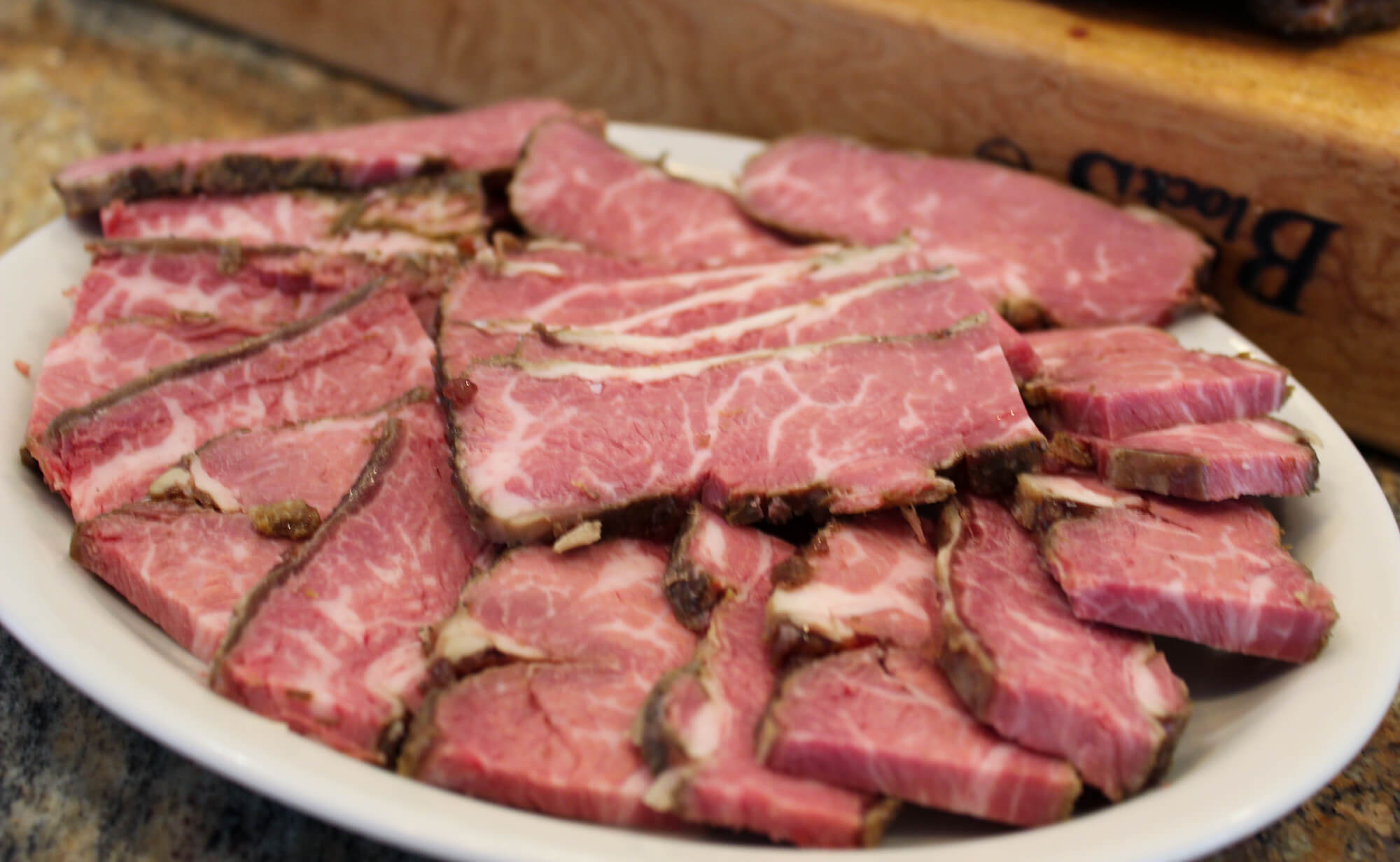
Why, in my humble opinion is this the best version of beef short rib cooked sous vide? The short answer is: It’s never ever stinky! But I’m hoping you want to know a little more about what I’m talking about and what I did to read on.
If not, here is a quick jump to the simple recipe.
For years I’ve been cooking short rib using my immersion circulator, usually for anywhere between 48 to 72 hours. When it comes out well, it is like a miracle of cut of beef. The long cook time at a low temperature tenderizes the very tough meat but does not braise it. It’s the ultimate beefy steak with the right amount of fat and tons of flavor. However, many times the meat comes out…well kind of stinky. Not rotten stinky, more like really funky, metallic, almost with a blue cheese smell to it when you take it out of the bag. It’s not spoiled and the meat does not taste too strongly of this funk but still, I very much disliked that. It’s just not so good. After the expense and time waiting for it to be ready I want this cut to come out exactly as I like. The solution? Remove the bones and then cook.
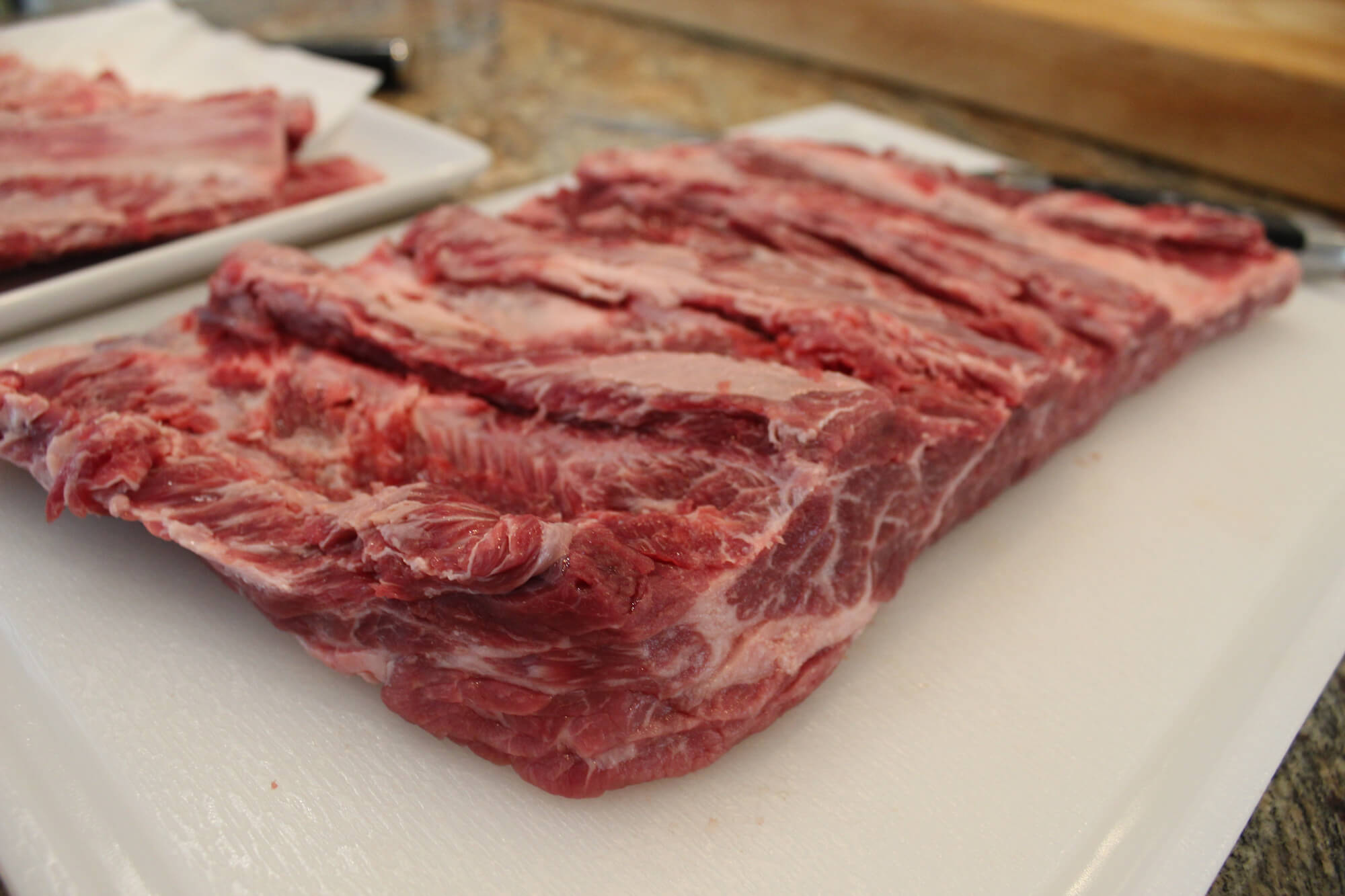
This is by no means a scientific conclusion, but one based on practice and experience and consistent result. I noticed that when I cooked the short ribs on the bone for a long time lots of gunk (proteins, coagulated blood, who knows what else…) is released into the vacuum bag. The “juices” in the bag had the strongest of that odor I despise so much. I tried a few methods to eliminate other sources of smell. For example, a popular theory is that some surface bacteria on the meat has the chance to produce off odors before the meat reaches the temperature necessary to kill them off. So, I made sure to sear the beef and then to dunk the sealed meat, bag and all, in a pot of very hot water (90 C or so) for a few minutes. This barely seemed to help. This enforced my assumption that the smell is coming, not from the surface, but more from the inside of the cut somehow.
I cook a lot of Texas-style barbecue on my offset smoker. A popular cut for that is a slab of beef ribs. These are smoked for about 10-12 hours, on the bone, until they are meltingly tender. One time I noticed that the meat closest to the bone just had a hint of that smell – what I’ve come to call “funky bone smell“. That’s when I decided to just do sous vide short ribs sans the damn bones and see what happens. I have not regretted that decision one bit.
It not only produces a delicious beefy cut, but has several other advantages:
- It makes bagging the meat way easier and tighter with no risk of the bone poking a hole in the bag.
- Once cooked, the bag is more convenient for weighing down to make a neat flat slab of meat as it chills.
- Slicing the cooked beef is easier with no gristle and gunk. You end up with perfect versatile pieces of beef to use any way you see fit.
- The juice in the bag is actually tasty, not gross.
- You have 3 or 4 rib bones that are perfect for stock, or “jus”.
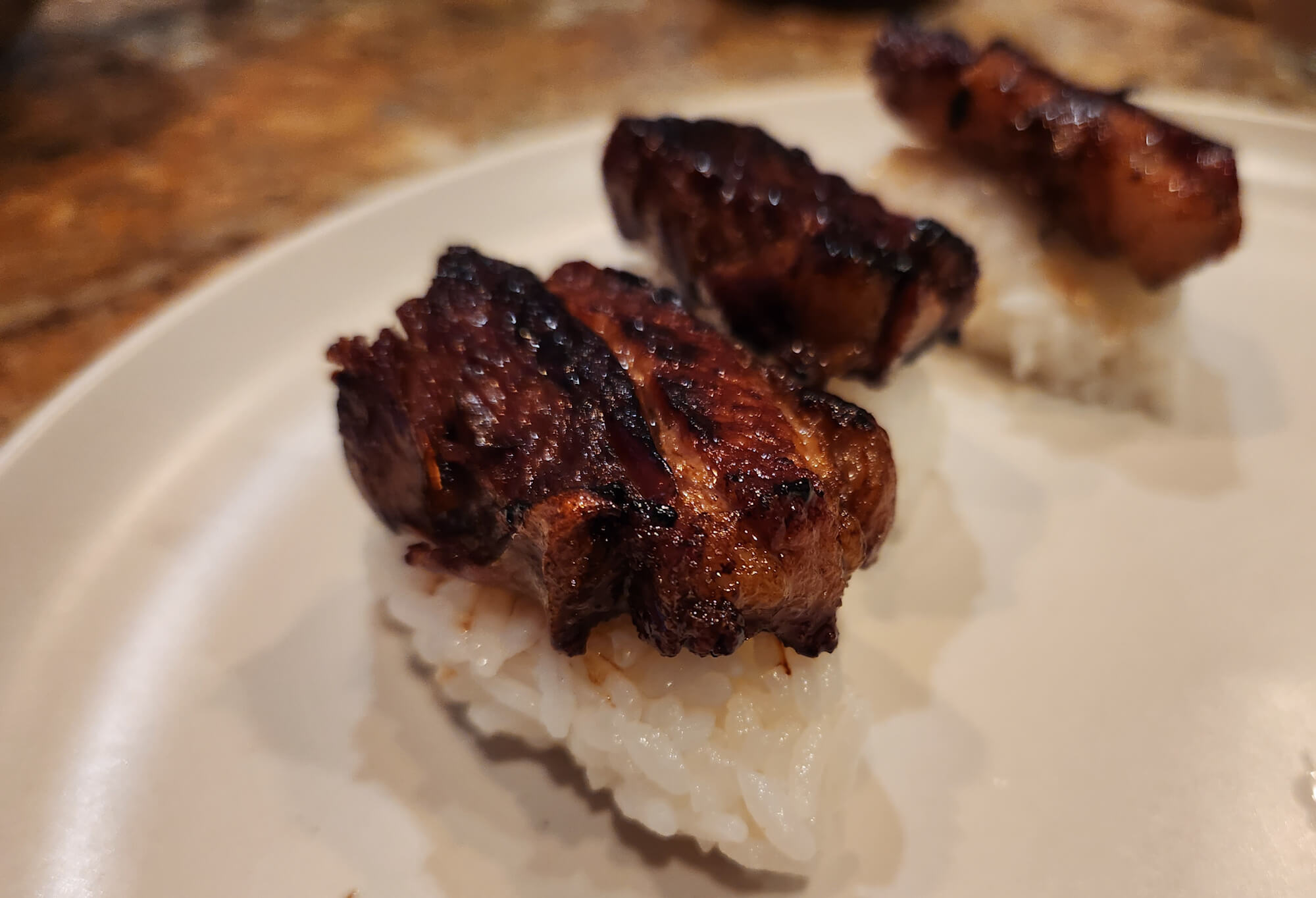
The main disadvantage to this method? taking the time to debone the meat. I enjoy the process honestly but I can see that it might not be up everyone’s alley. Just use a nice sharp boning knife and take your time letting the weight of the meat (as described in the recipe below) do a lot of the work. It is very much worth it! Hope these pictures below are a bit helpful.
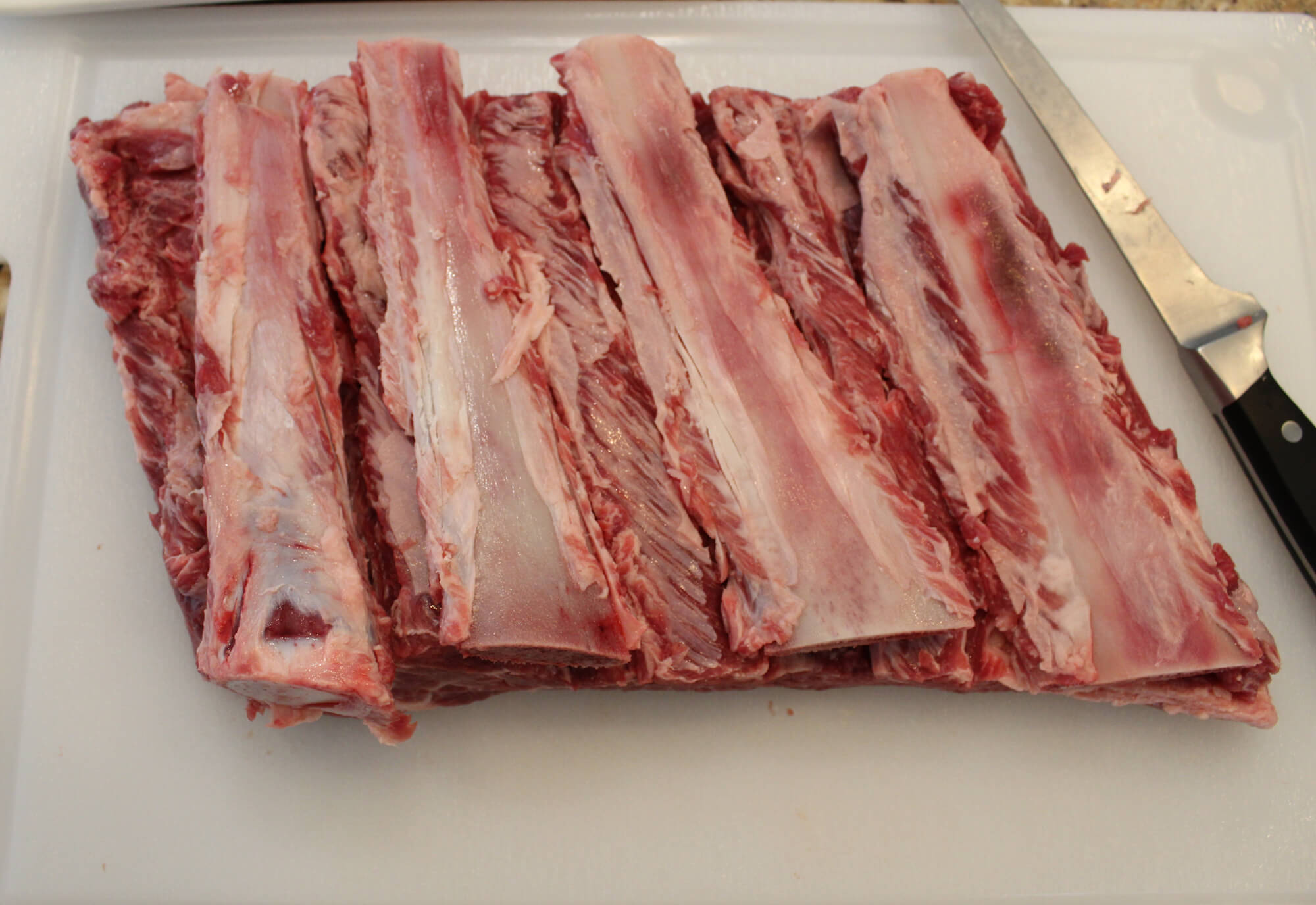
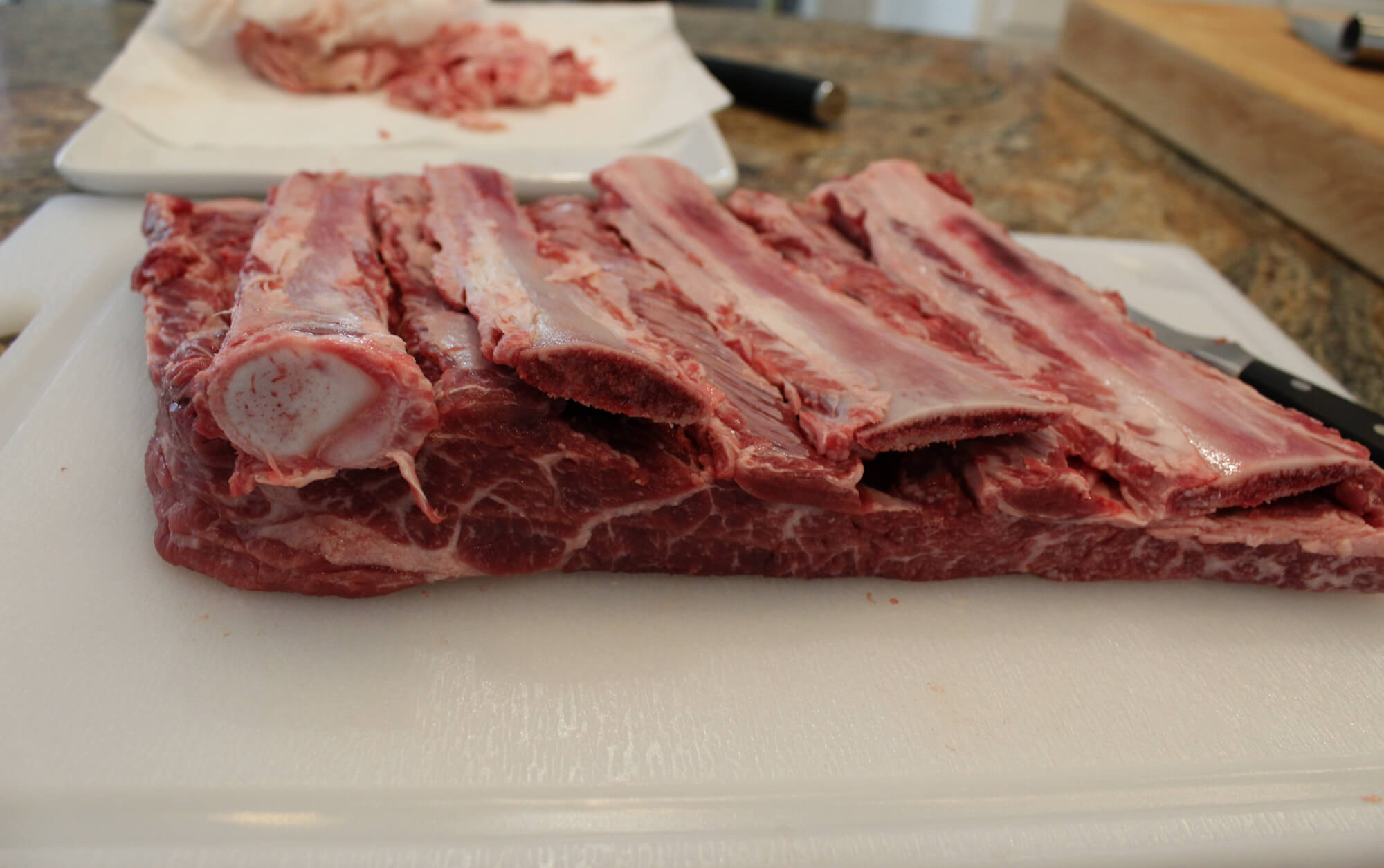
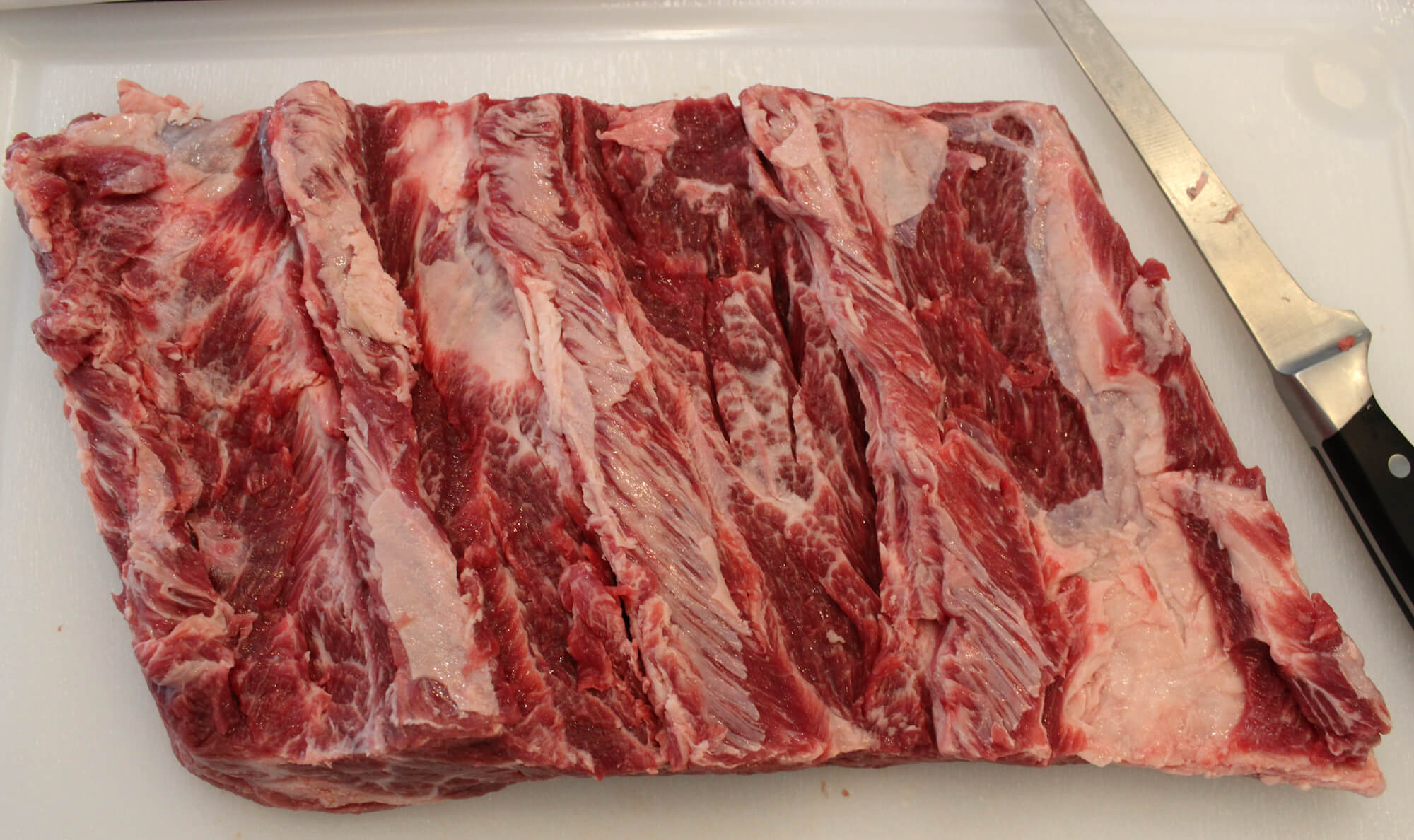
72-hour Beef Short Ribs
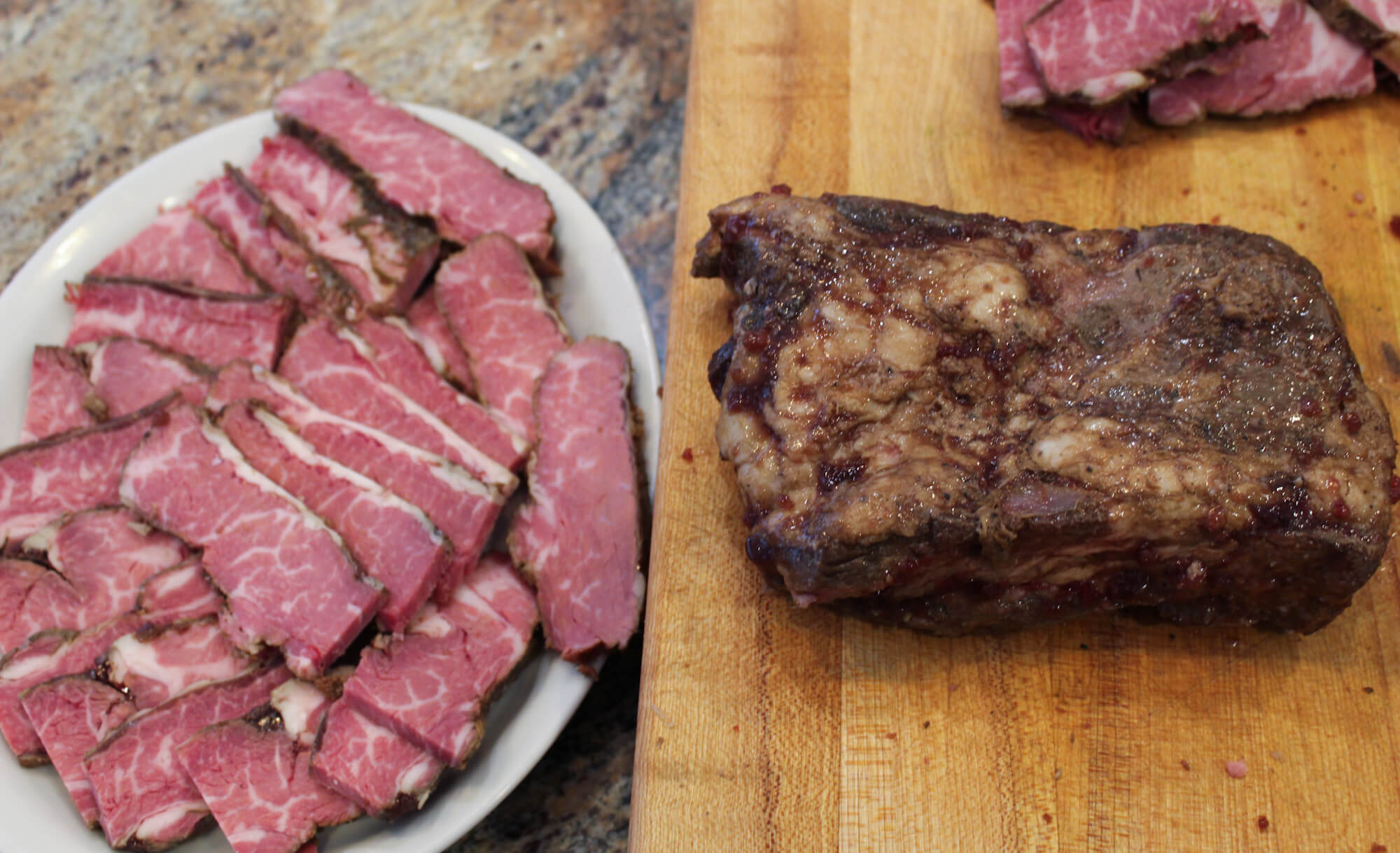
Servings: 4 – 5
- 1 Slab of beef short ribs, usually 3 to 4 bones, in one piece
- Kosher Salt (1.5% of the weight of the BONELESS beef)
- Black pepper
- Remove the bones from the meat. This is not difficult if you have a good sharp boning knife.
- Trim some of the fat away, but leave a good amount on the meat side. On the bone side, trim all of it off where the bones are so that you can clearly see those bones. Remove any connective tissue and membranes on this side too.
- Gently cut the meat away from the sides of the ribs. Lift each bone and keep going around it and under it letting the weight of the meat help you.
- Once all the bones are removed feel for any cartilage and shards and trim off.
- You should end up with a neat-ish rectangle, flat on one side and with some “ridges” on the other side where the rib bones used to be.
- Salt well all over and on both sides and season with pepper.
- Let it rest for an hour at room temperature or overnight in the fridge (better).
- Heat a pan with a little oil in until it starts smoking. Sear the meat on both sides, about a minute or so on each should suffice. You want to get a nice brown color on it mostly for flavor. Remove and allow to cool for 15 minutes (or again, place in the fridge for a few hours if you want).
- Vacuum seal the meat. You can put some other seasoning here if you like depending on what you want to use the beef for. I like it plain so that I have more flexibility with what I use for.
- Optional: I do not always do this step, but I see it as more insurance for the long cook, especially if I am going for a lower sous vide temperature. Bring a pot of water to about 190 F and dunk the bagged meat in there for one minute.
- Cook it sous vide at 140 F (60 C) for 72 hours. You can use lower temperatures (130 F for example) for an effect closer to steak. I like 140 F for most applications though.
- Remove the beef from the water and let it rest for 15 minutes.
- Chill it quickly in an ice water bath. Place the bag on a flat plate or tray, add another flat plate on top and some weights (like food cans) on top of that.
- Refrigerate it for a few hours until the shape is set.
- Now the beef in the bag is nice and flat and chilled. It can stay in the fridge for a week or the freezer for…whenever.
- To use it, I like dipping the bag in very warm water to loosen the beef and the juices and then remove the meat from the bag. It should smell beefy, savory and delicious.
- You can slice into planks, pan sear and enjoy as is or in tons of applications (tacos, sandwiches, nigiri, ramen topping,…)

I’ve only just noticed this post. I’ve never had the stinky smell when scalding the outside as you describe, even with the bone still in. But perhaps there is some lactobacillus that hides in the crevice between the meat and the bone, and survives the scalding in that way, and thus removing the bone helps.